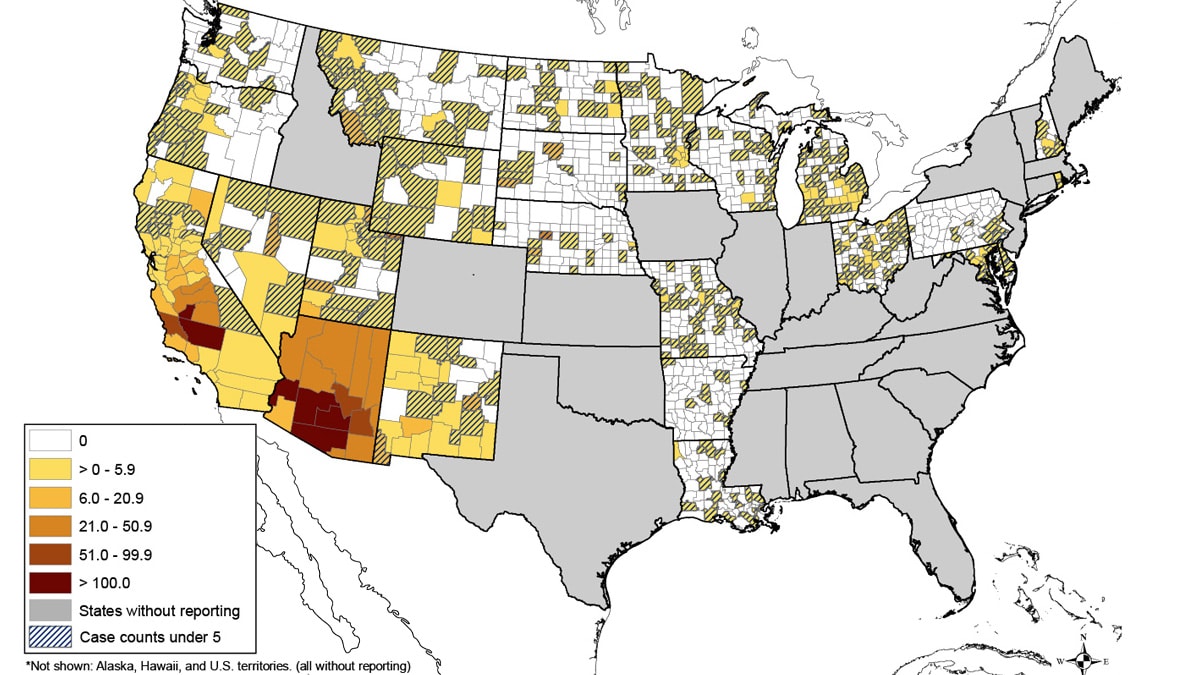Valley fever (coccidioidomycosis) is a lung infection from a fungus in soil in parts of the U.S.
Maps show the approximate areas where the fungus that causes Valley fever (Coccidioides) is found.
- Valley fever is a lung infection. Symptoms may include fever, cough, and shortness of breath.
- Blood tests can determine if you have Valley fever. It is often misdiagnosed without testing.
- Learn about the risk factors for Valley fever and some ways to help prevent infections.
- Most people who get Valley fever don't need treatment. Antifungal drugs treat serious infections.
- Stories of people who were diagnosed with Valley fever
For professionals
Valley fever is often self-limiting. Severe or disseminated cases require antifungal treatment.
Clinical algorithm to guide testing and treatment for Valley fever in patients with pneumonia.
Valley fever is a national notifiable disease most common in the Southwest. It is under diagnosed.
More fungal diseases and related resources
Fungal diseases and antifungal resistance are increasing worldwide. Misdiagnosis is common.
Find and download social media graphics, fact sheets, infographics, and animated videos.
Access webinars and podcasts featuring world experts in fungal diseases and find clinical resources.








